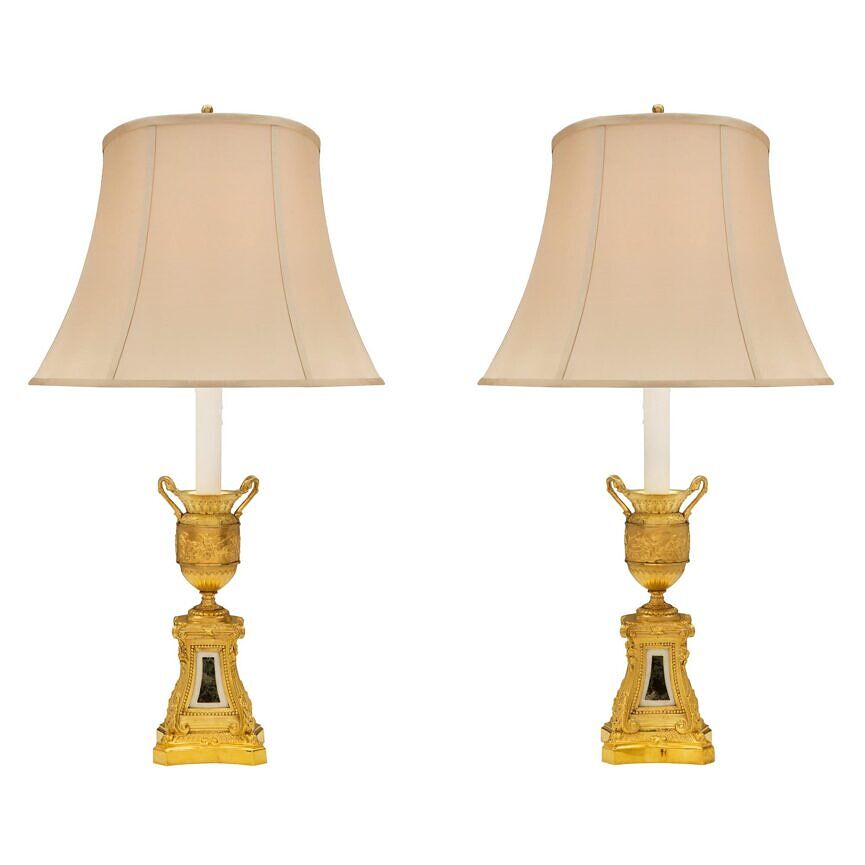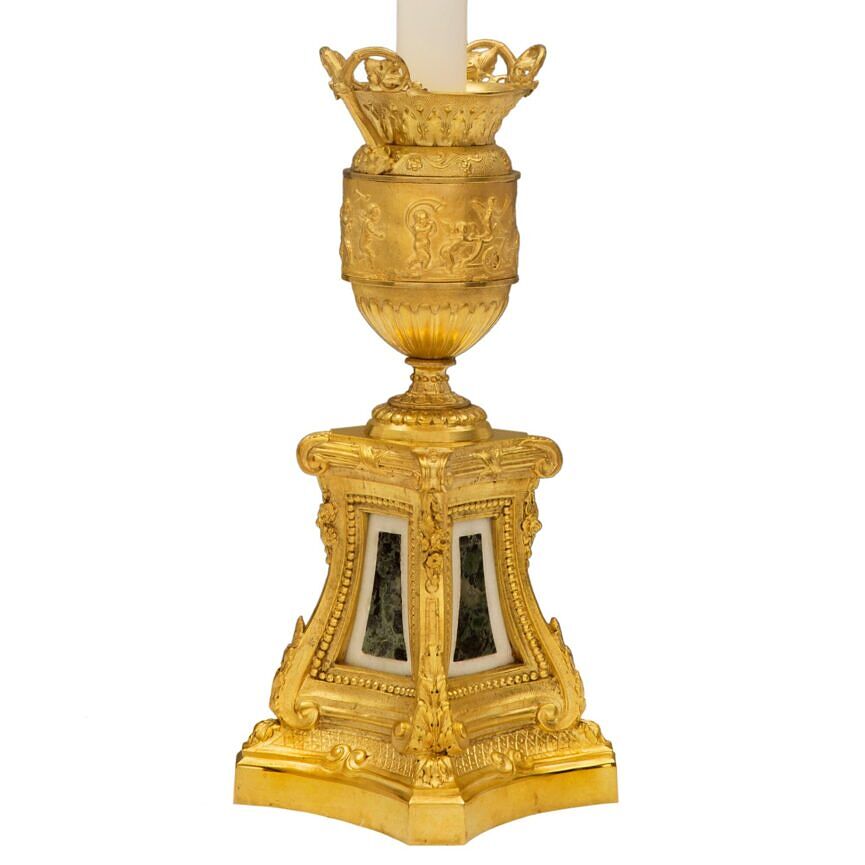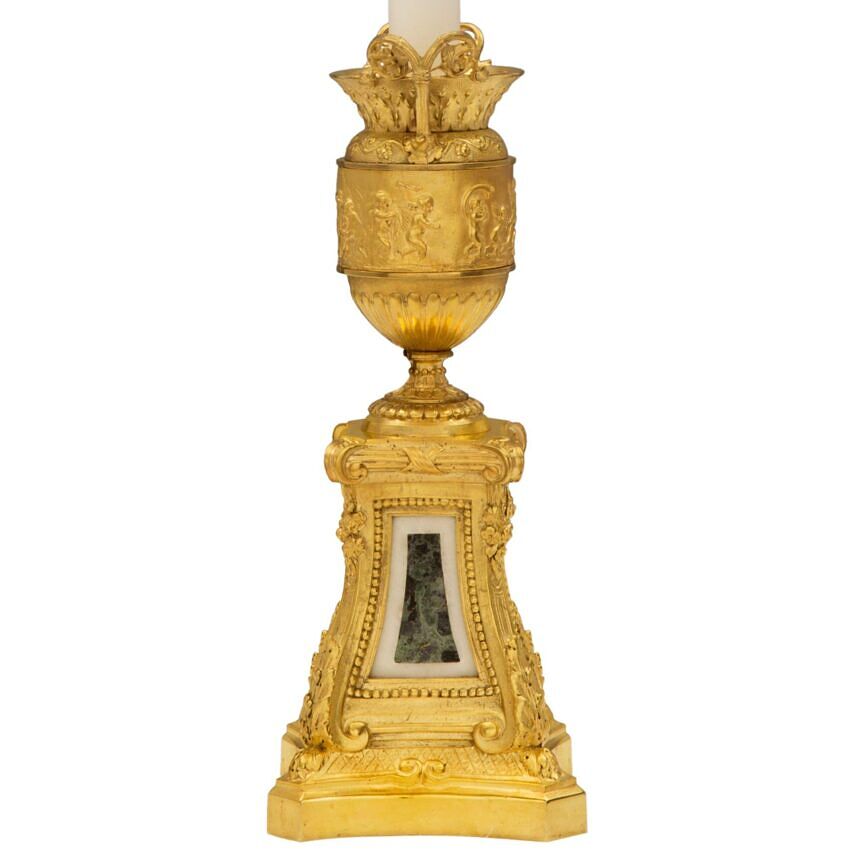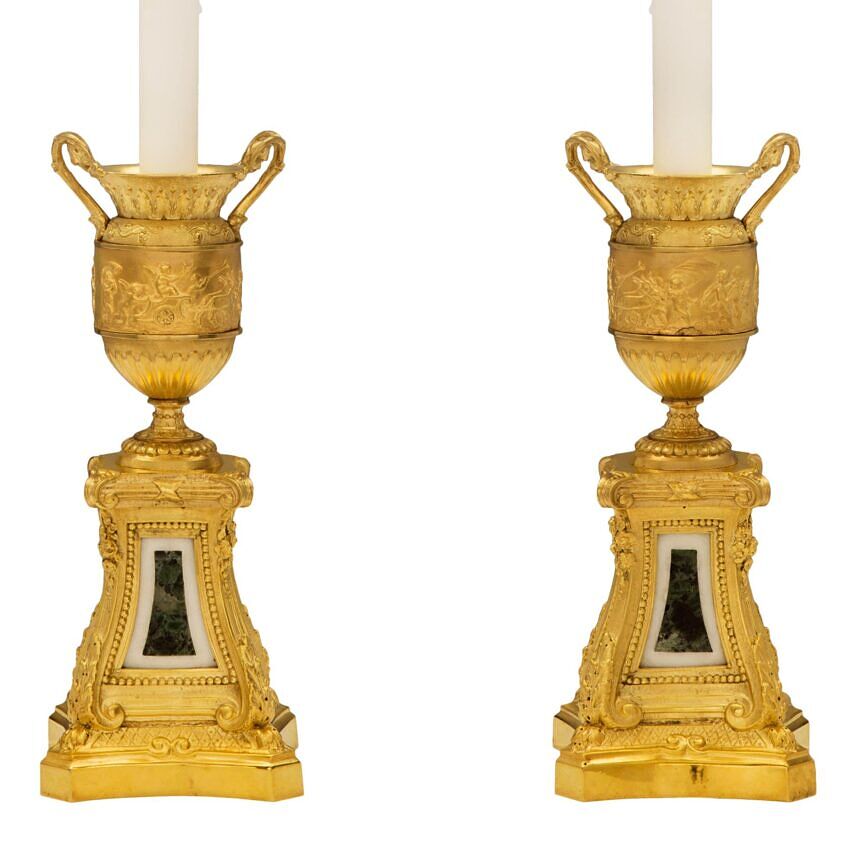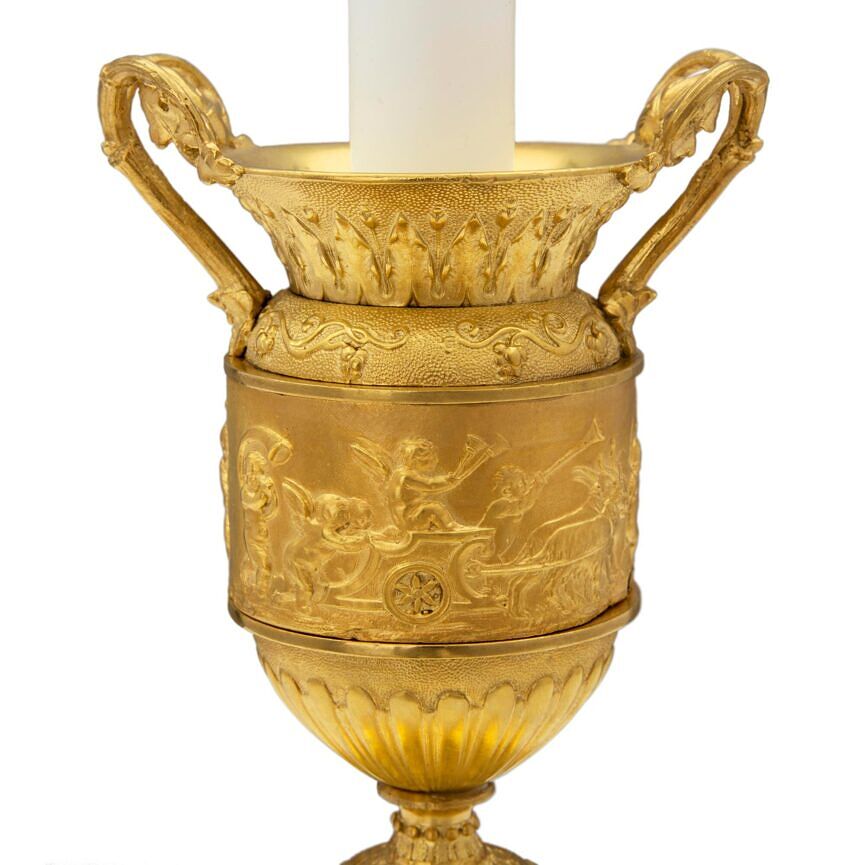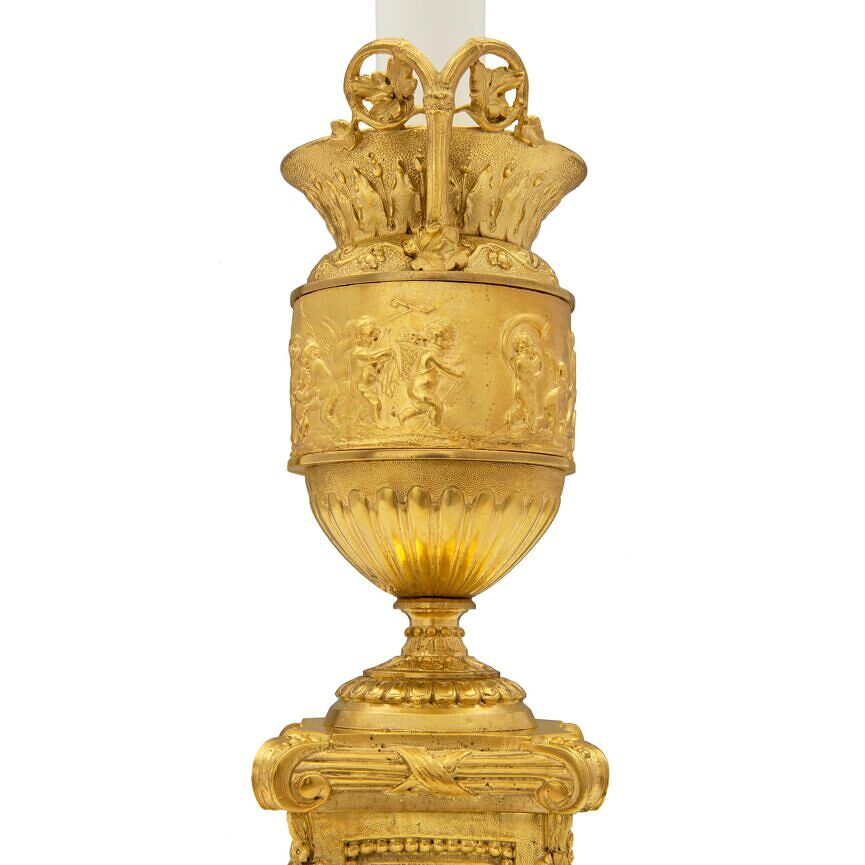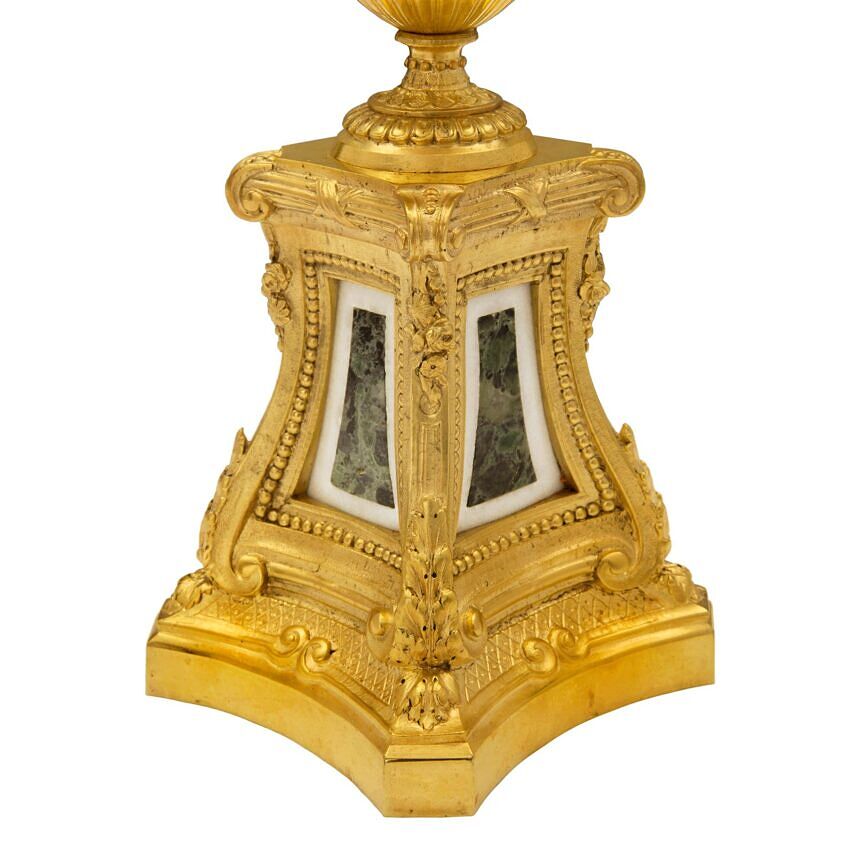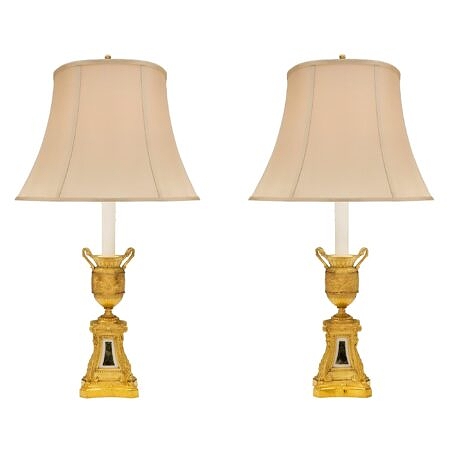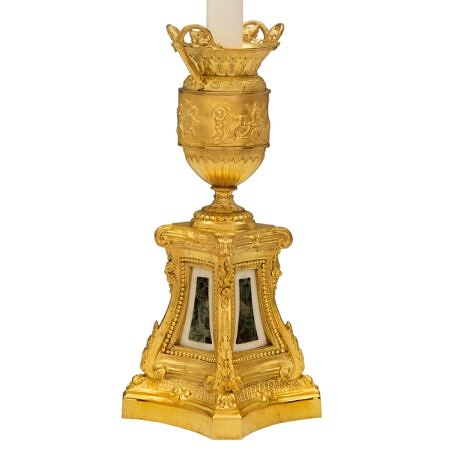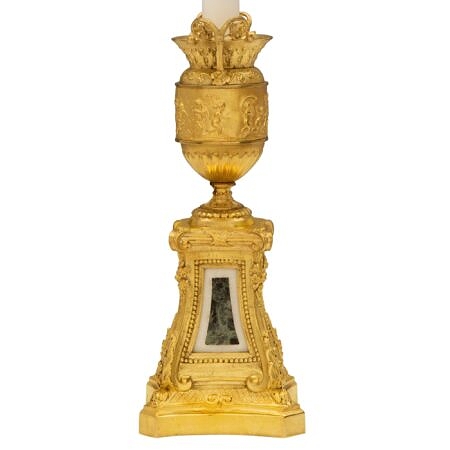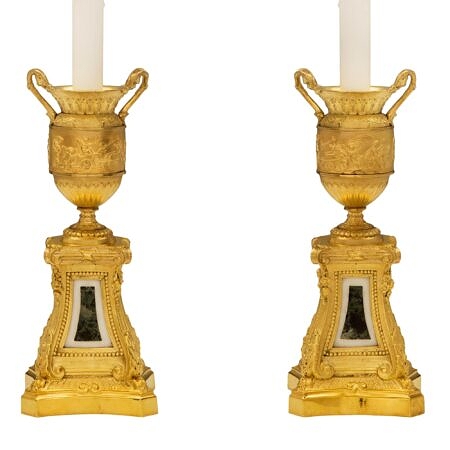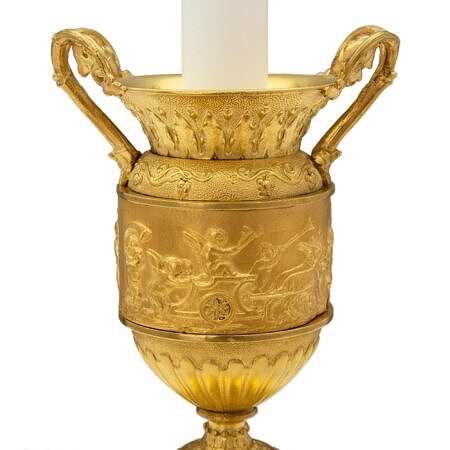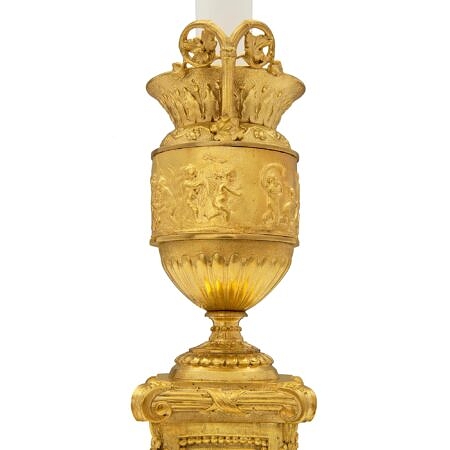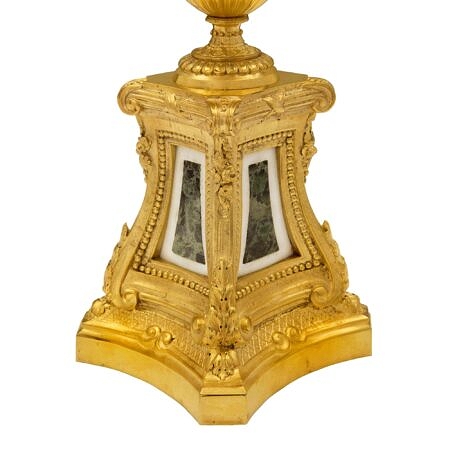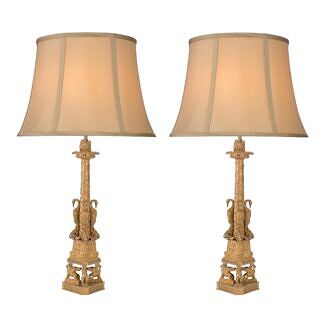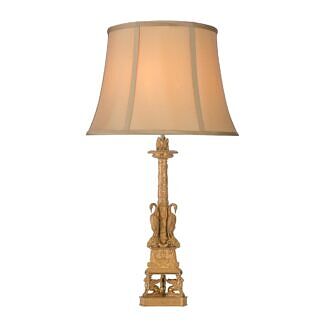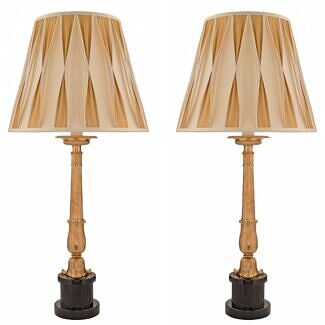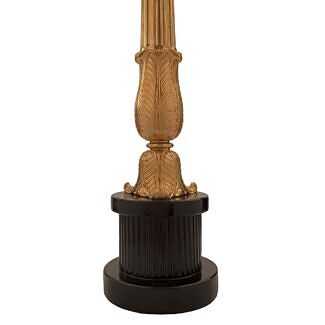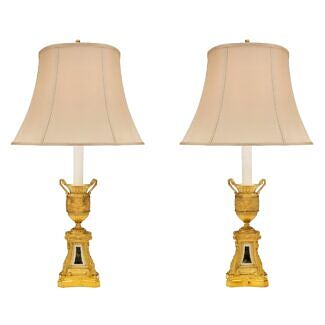A pair of French 19th century Louis XVI st. ormolu, Carrara marble and Vert de Patricia marble lamps after a model by Clodion
An exceptional pair of French 19th century Louis XVI st. ormolu, white Carrara marble and Vert de Patricia marble lamps after a model by Clodion. Each lamp is raised by a square base with concave sides and mottled border. The... — Read More
An exceptional pair of French 19th century Louis XVI st. ormolu, white Carrara marble and Vert de Patricia marble lamps after a model by Clodion. Each lamp is raised by a square base with concave sides and mottled border. The central supports display lovely elegant lattice patterns amidst richly chased scrolled foliate designs which center striking and most unique fitted white Carrara marble and Vert de Patricia marble plaques. Above, the urns display most elegant beaded and foliate socle pedestals and superb and richly chased wrap around bands with charming cherubs in chariots playing musical instruments. Above are lovely hammered designs with fine palmettes flanked by scrolled foliate arms. — Read Less
- Item # 10897
-
H: 24.75 in L: 14 in D: 14 in
H: 63 cm L: 36 cm D: 36 cm
- France
- 19th Century
- Marble/Stone, Ormolu
-
Louis XVI st. Read More
(Louis XVI st.) -
Also known as Louis Seize, Louis XVI's style is a style of architecture, furniture, decoration, and art created during Louis XVI’s 19-year reign in France, just before the French Revolution.
Thought to be a reaction and juxtaposition to the prior more elaborate styles, Louis XVI style developed at the end of the Baroque Period and continued until the birth of French Neoclassicism.
King Louis XVI showed little enthusiasm for the old world styles of the Baroque Period and he sought out a create a new “beau ideal” that focused on the purity and grandeur of Ancient Romans and Greeks.
Inspired by Ancient Roman architecture and art, distinct features of the Louis XVI style are linear lines, small repeated motifs, floral medallions hanging from ribbons, acanthus leaves, urns, dolphins, ram, and lion heads, and griffins.
Greco-Roman elements, often used in earlier and later French styles, were also quick common and included fluted and twisted columns, Caryathids, and corbels.
- Claude Michel Read More
Claude Michel, aka Clodion (1738 – 1814) Was a renowned French Master sculptor Born in Nancy, France. In 1755, Clodion went to Paris and was a pupil of J. B. Pigalle. In 1759 he obtained the grand prize for sculpture at the Académie Royale; in 1761 the silver medal for studies from models; and in 1762 he went to Rome. Catherine II of Russia was eager for him to go and stay in St Petersburg, but he returned to Paris. Among his patrons, were the chapter of Rouen, the states of Languedoc, and the Direction Générale. His works were frequently exhibited at the Salon. Among Clodion's works, that are displayed all over the world, are a statue of Montesquieu and a Dying Cleopatra, in the Victoria and Albert Museum, (London). One of his last groupings represented Homer as a beggar being driven away by fishermen (1810).
Claude Michel works may be seen at: the Art Institute of Chicago, the Bowes Museum (County Durham, UK), the Carnegie Museum of Art (Pittsburgh), the Courtauld Institute of Art (London), the Fine Arts Museums of San Francisco, the Frick Collection (New York City), the Getty Museum (Los Angeles), the Kimbell Art Museum (Texas), the Louvre (Paris), the Metropolitan Museum of Art, Musée Cognacq-Jay (Paris), the Museum of Fine Arts (Boston), Musée des Beaux-Arts (Bordeaux), Museum Boijmans Van Beuningen (Rotterdam), the National Gallery of Armenia, the National Gallery of Art (Washington.), the Norton Simon Museum (Pasadena) and the Philadelphia Museum of Art.
Payment Plan Option Learn More Choose the payment plan option at checkout and customize this payment option with our team. Payment plans are flexible and items will ship once all payments are received.


